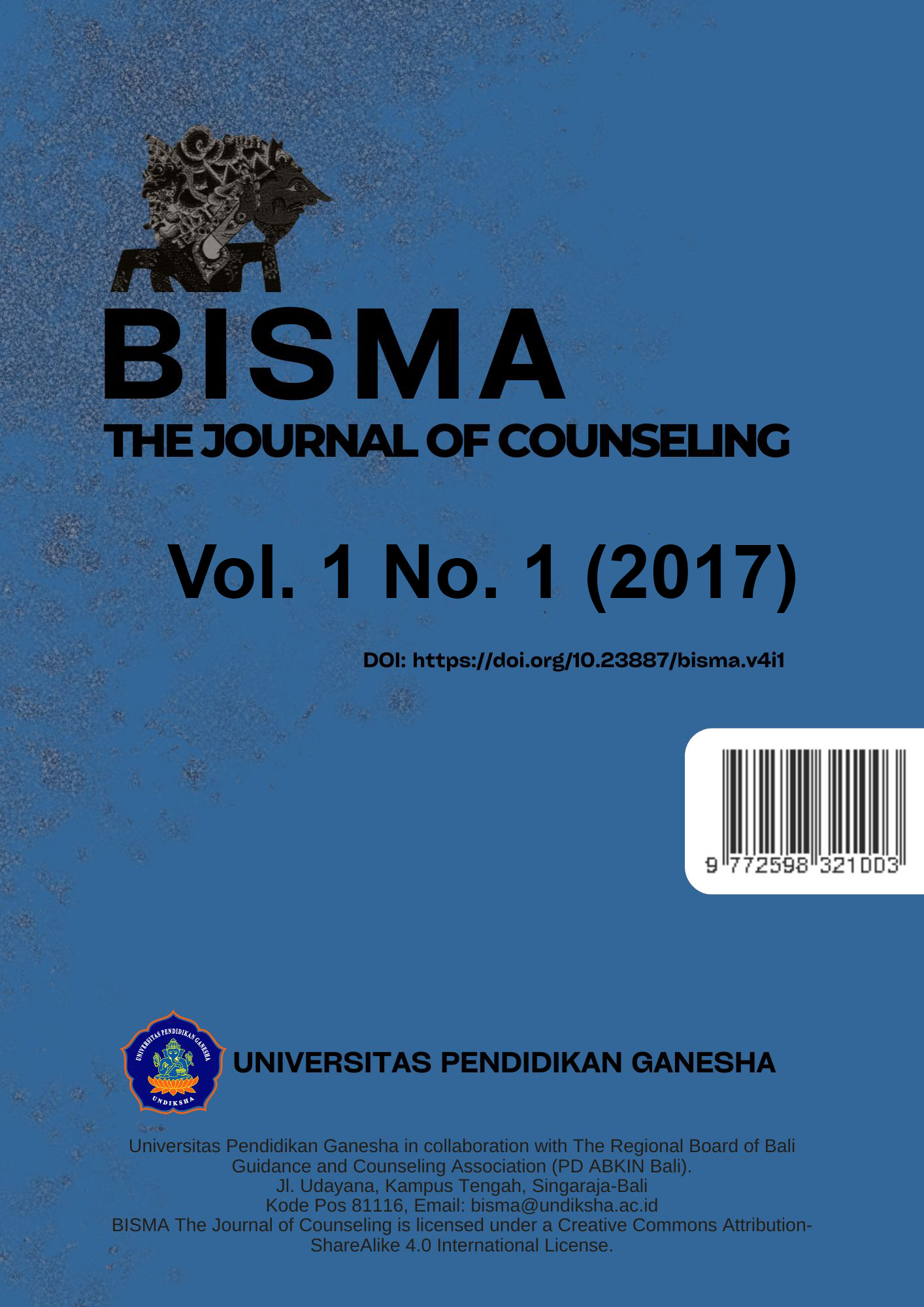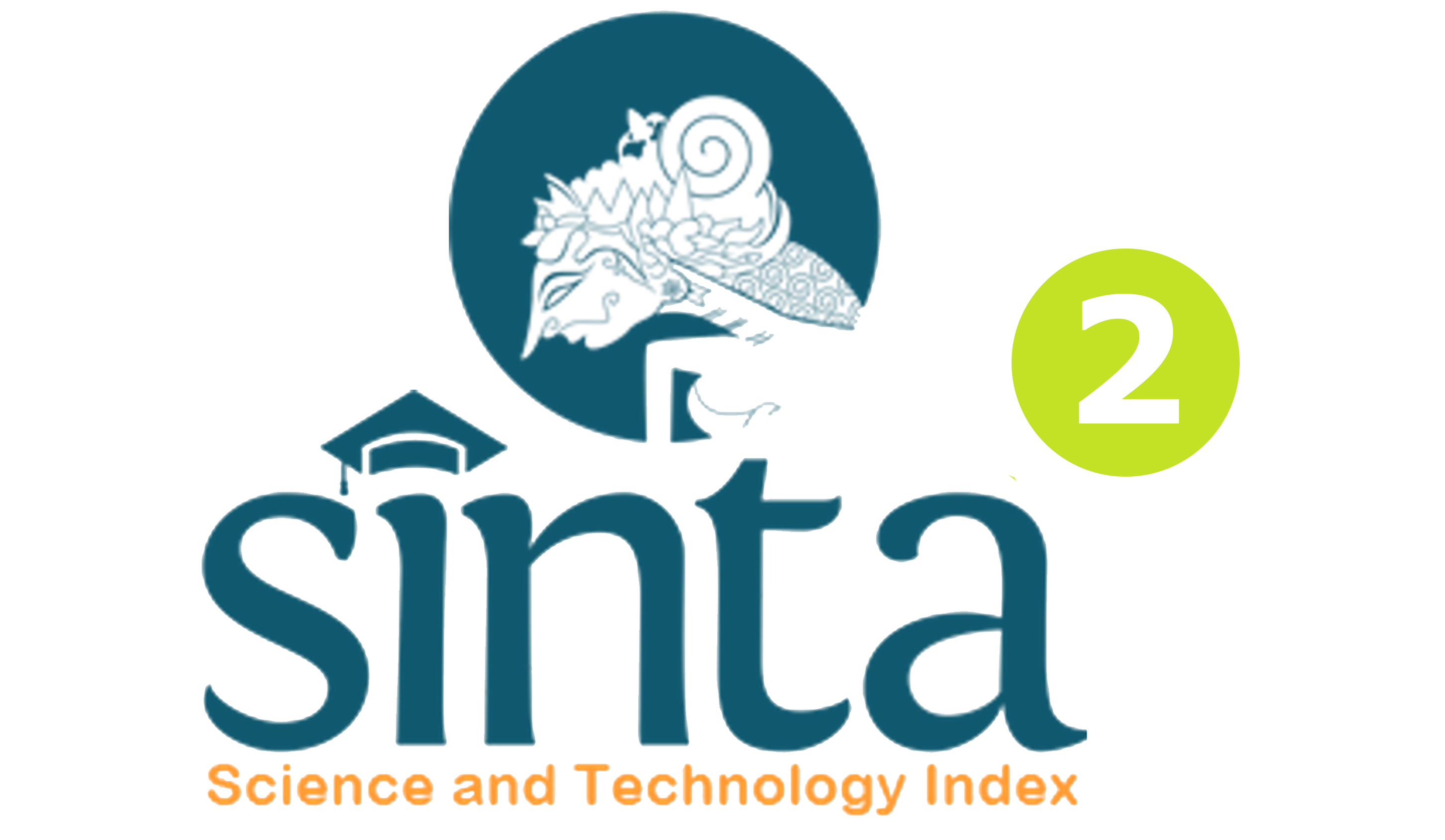Effectiveness Behavioral Coating with Modeling Techniques and Assertive Training Techniques to Increase Confidence
DOI:
https://doi.org/10.23887/128312017Keywords:
behavioral counseling, modeling, assertive exercise, confidenceAbstract
This study aims to understand: Effectiveness of behavioral counseling techniques of modeling and assertive training techniques to improve students' self-confidence. The experimental design used was Nonequevalen Control Group Design, this study included "quasieksperimen" research. The population of this study is the students of class X Boga SMK Negeri 2 Singaraja which amounted to 203 people. The sample was taken using purposive sampling technique with 16 students who have low self esteem by obtaining low score, as many as 8 people assigned as experimental group 1 and 8 the rest are assigned as experiment group 2. Data collection was confident in this study using a self-confident questionnaire. The results showed that there are differences in the effectiveness of students who follow Behavioral Counseling modeling techniques and students who follow assertive training techniques to improve students' self confidence X grade Boga SMK N 2 Singaraja.References
Angelis,B.(2003).Confidence (Percaya Diri) Sumber Sukses dan Kemandirian.Cetakan Ketujuh. Jakarta : Gramedia Pustaka Utama.
Adiputra, S. (2015). Penggunaan Teknik Modeling Terhadap Perencanaan Karir Siswa. Jurnal Fokus Konseling, 1(1), 45–56. Http://Ejournal.Stkipmpringsewu-Lpg.Ac.Id/Index.Php/Fokus/Article/Viewfile/70/21
Alwisol, R. (2004). Psikologi Kepribadian. Malang: Universitas Muhammyadiah Malang.
Angelis,D.B. (2003). Confidence Sumber Sukses Dan Kemandirian. Jakarta: Gramedia Pustaka Utama.
Bandura, A. (1977). Self-Efficacy: Toward A Unifying Theory Of Behavioral Change. Psychological Review1, 84(2), 191–215. Https://Doi.Org/10.1037/0033-295x.84.2.191
Camerer, C. F., Loewenstein, G., & Rabin, M. (2004). Behavioral Economics: Past, Present, Future. Advances In Behavioral Economics, 2–51. Https://Doi.Org/Citeulike-Article-Id:568162
Chui, L., Martin, K., & Pike, B. (2013). A Quasi-Experimental Assessment Of Interactive Student Response Systems On Student Confidence, Effort, And Course Performance. Retrieved From Https://Ir.Stthomas.Edu/Cgi/Viewcontent.Cgi?Referer=Https://Scholar.Google.Co.Id/&Httpsredir=1&Article=1055&Context=Ocbacctpub
Damayanti, R., & Aeni, T. (2016). Rika Damayanti, Tri Aeni, 3 (1), 1–10. Http://Ejournal.Radenintan.Ac.Id/Index.Php/Konseli/Article/Viewfile/572/1257
Dantes, Nyoman. (2012). Metode Penelitian. Singaraja : Andi
Dharsana, Ketut. (2014). Teori-Teori Konseling Dan Teknik Konseling. Singaraja
Elfarini, R. S., & Elisabeth Christiana, S.Pd., M. P. (2013). Pengembangan Media Monopoli Asertif Untuk Meningkatkan Pemahaman Siswa Tentang Perilaku Asertif Pada Siswa Kelas VIII-A Rifani Suci Elfarini, 1. Retrieved From Http://Jurnalmahasiswa.Unesa.Ac.Id/Article/3534/13/Article.Pdf
Ellis, A.,& Grieger, R. (Ed). (1986). Ret Handbook Of Rational-Emotive Therapy. Vol. 2. New York : Springer Publishing Company.
Efendi, Kusno. (2016). Proses Dan Keterampilan Konseling. Yogyakarta : Pustaka Pelajar
Gael Lindenfield, Alih Bahasa Ediati Kamil. (1997). Mendidik Anak Agar Percaya
Diri. Jepara. Silas Press.
Hakim, T. (2002). Mengatasi Rasa Tidak Percaya Diri. Jakarta: Puspa Swara.
Hakim, Thursan. (2002). Mengatasi Rasa Tidak Percaya Diri : Puspa Swara Http://Binham.Wordpress.Com/2012/04/08/Konseling-Rasional-Emotif-Terapi-Ret/ Diakses Tanggal 2/1/2017Http://Sullivanpainresearch.Mcgill.Ca/Pdf/Pcs/Pcsmanual_English.Pdf Diakses Tanggal 2/2/2017
Hamdu, G., & Agustina, L. (2011). Pengaruh Motivasi Belajar Siswa Terhadap Pestasi Belajar Ipa Di Sekolah Dasar (Studi Kasus Terhadap Siswa Kelas Iv Sdn Tarumanagara Kecamatan Tawang Kota Tasikmalaya). Jurnal Penelitian Pendidikan, 12(1). Retrieved From Https://S3.Amazonaws.Com/Academia.Edu.Documents/35968572/8-Ghullam_Hamdu1.Pdf?Awsaccesskeyid=Akiaiwowyygz2y53ul3a&Expires=1511943233&Signature=Wek5o%2bg9jnjya5wwlwefashuihy%3d&Response-Content-Disposition=Inline%3b Filename%3dpengaruh_Motivasi_Belajar_Siswa_Terhadap.Pdf
Hendriana, H. (2012). Pembelajaran Matematika Humanis Dengan Metaphorical Thinking Untuk Meningkatkan Kepercayaan Diri Siswa, 1(1), 90–103.
Ismail, A. M., & Dakir, Y. H. O. Jawiah. (2011). The Development Of Human Behaviour: Islamic Approach. Jurnal Hadhari, 3(32), 103–116. Retrieved From Www.Ukm.My/Jhadhari
Jondrow, J., Knox Lovell, C. A., Materov, I. S., & Schmidt, P. (1982). On The Estimation Of Technical Inefficiency In The Stochastic Frontier Production Function Model. Journal Of Econometrics, 19(2–3), 233–238. Https://Doi.Org/10.1016/0304-4076(82)90004-5
Kelly, M. M., & Riggs, N. R. (2006). Use Of A Virtual Environment In The Geowall To Increase Student Confidence And Performance Duringfile:///D:/Citasi Pd Dan Asertif/9-15-1-Sm.Pdffile:///D:/Citasi Pd Dan Asertif/9-15-1-Sm.Pdf Field Mapping : An Example From An Introductory-Level Field Class, 158–164
Lauster, P. 2002. Tes Kepribadian. Jakarta: Bumi Aksara.
Muhamad, N. (2013). Pengaruh Metode Discovery Learning Untuk Meningkatkan Representasi Matematis Dan Percaya Diri Siswa, 9–22. Retrieved From Https://Ir.Stthomas.Edu/Cgi/Viewcontent.Cgi?Referer=Https://Scholar.Google.Co.Id/&Httpsredir=1&Article=1055&Context=Ocbacctpub
Lessig, L., & Resnick, P. (1999). Zoning Speech On The Internet: A Legal And Technical Model. Michigan Law Review, 98(2), 395–431. Https://Doi.Org/10.2307/1290343
Mallinckrodt, B., Wood, P. S., & Mallinckrodt, B. (2015). Culturally Sensitive Assertiveness Training For Ethnic Minority Clients Culturally Sensitive Assertiveness Training For Ethnic Minority Clients, (May). Https://Doi.Org/10.1037/0735-7028.21.1.5
Mar, A., Hasanah, A., & Saraswati, S. (2014). Indonesian Journal Of Guidance And Counseling : Theory And Application. Indonesian Journal Of Guidance And Counseling : Theory And Application, 3(4), 39–46. Http://Alumni.Univpgri-Palembang.Ac.Id/E_Jurnal/Index.Php/Prosiding/Article/Viewfile/1248/1094
Muqodas, I. (2011). Cognitive-Behavior Therapy : Solusi Pendekatan Praktek Konseling Di Indonesia, 1–22.
Podsakoff, P. M., Mackenzie, S. B., Lee, J.-Y., & Podsakoff, N. P. (2003). Common Method Biases In Behavioral Research: A Critical Review Of The Literature And Recommended Remedies. Journal Of Applied Psychology, 88(5), 879–903. Https://Doi.Org/10.1037/0021-9010.88.5.879
Putranto, Kaandra. 2016. Aplikasi Cognitive Behavior Dan Behavior Activation Dalam Intervensi Klinis. Jakarta Selatan: Grafindo Books Media.
Stoltenberg, C. (1981). Approaching Supervision From A Developmental Perspective : The Counselor Complexity Model, 28(1), 59–65. Retrieved From
Http://Pegasus.Cc.Ucf.Edu/~Drbryce/Approaching Supervision From Dev Perspective.Pdf
Sue, S., & Zane, N. (2009). The Role Of Culture And Cultural Techniques In Psychotherapy : A Critique And Reformulation, 42 (1), 3–14. Https://Doi.Org/10.1037/1948-1985.S.1.3
Rohayati, I. (2011). Program Bimbingan Teman Sebaya Untuk Meningkatkan Percaya Diri Siswa, (1), 368–376. Retrieved From Http://Jurnal.Upi.Edu/File/36-Iceu_Rohayati.Pdf
Sullivan, M. (1995). Integrating Psychological And Behavioral Interventions To Achieve Optimal Rehabilitation Outcomes. J Occ Rehab.
Tina Afiatin, Subandi, & H. (2000). Efektivitas Pelatihan Program Kelompok “ Aji ” Pada Guru Bimbingan Dan Konseling, (1), 23–36. Retrieved From File:///C:/Users/Asus/Downloads/7007-12243-1-Pb.Pdf
Willis, S. (2004). Konseling Individual Teori Dan Praktek. Bandung : Alfabeta.
Yanto, Febi. (2008). Meningkatkan Kepercayaan Diri Melalui Modelling(Penelitian Pada Siswa Kelas X Smu Negeri 1 Semarang Tahun Ajaran 2008/2009). Semarang : Unnes
Zeithaml, V. A., Berry, L., & Parasuraman, A. (1996). The Behavioral Consequences Of Service Quality. Journal Of Marketing, 60(2), 31–46. Https://Doi.Org/10.2307/1251929









